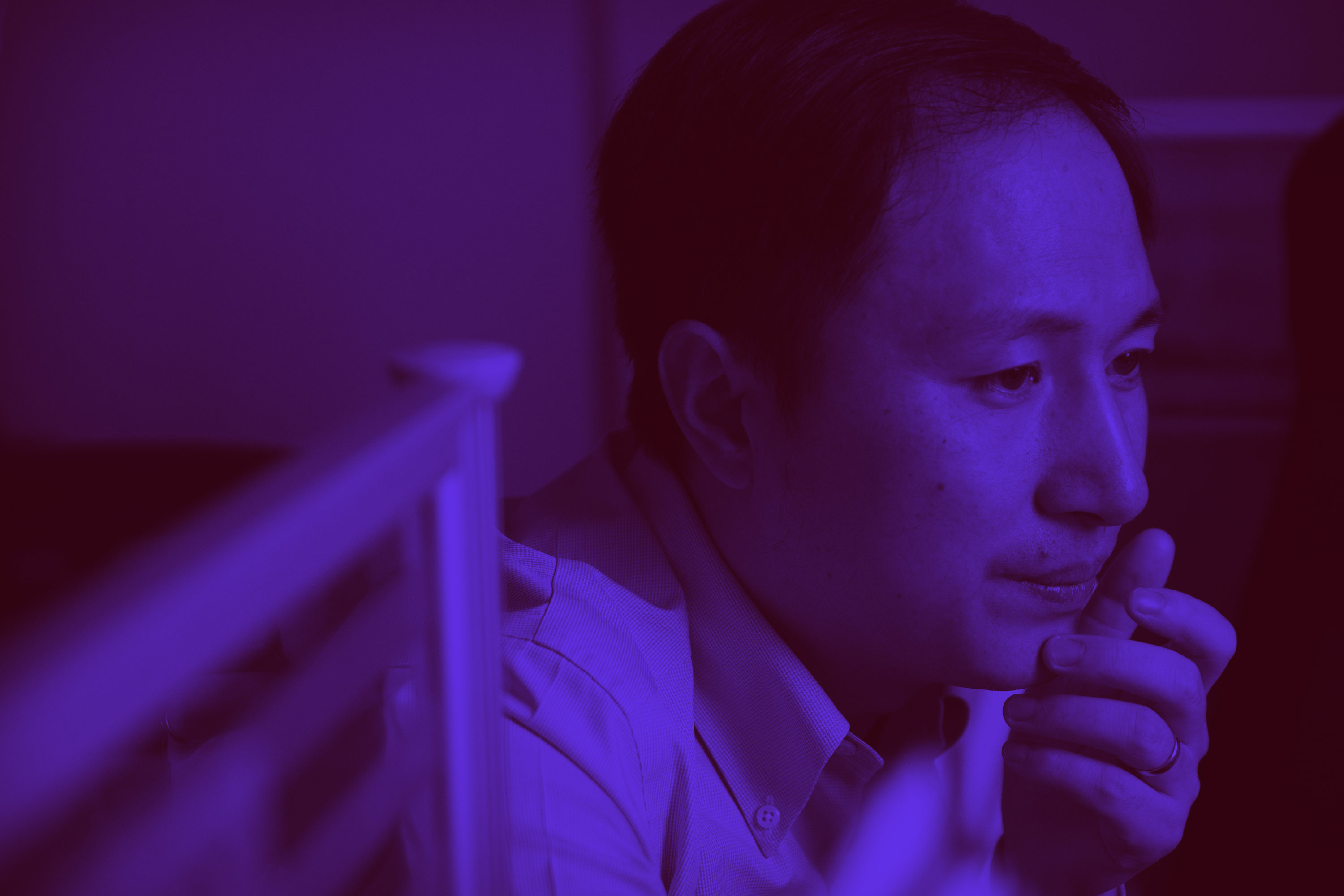China’s CRISPR babies could face earlier death

[Update 9/27/19: The author of the scientific report described in this story, Rasmus Nielsen of the University of California, Berkeley, announced on Twitter that his findings were “likely” wrong due to data errors and that he plans to correct the scientific record. This means Nielsen did not find evidence that mutations in a gene called CCR5 can shorten lifespan, as originally claimed.]
When the Chinese scientist He Jiankui created the first gene-edited children, he dreamed of improving the world. He believed the genetic alteration he added to twin girls born last year would protect them from HIV. Human embryo editing, he said, would bring new hope to millions.
Instead, he may have put the twins at risk of an early death.
A new report finds that genetic mutations similar to those He created, to a gene called CCR5, shortens people’s lives by an average of 1.9 years.
“It’s clearly a mutation of quite strong effect,” says population geneticist Rasmus Nielsen of the University of California, Berkeley, who made the discovery while studying DNA and death records of 400,000 volunteers in a large British gene database, the UK Biobank. “You can’t have many mutations that do that, or you wouldn’t live that long.”
The finding offers a warning light to anyone else seeking to enhance human beings. That’s because many genes have more than one role, and scientists tinkering with the balance are likely to cause side effects they didn’t expect or want.
In February, variations in the same gene were linked to recovery of memory after stroke, meaning it could have a role in changing brain function, too.
"To go ahead and alter the germline based on partial understanding is not responsible," says Feng Zhang, a biologist at the Massachusetts Institute of Technology and an expert in CRISPR, the powerful gene editing tool employed in the Chinese experiment. "It's another piece of information that we shouldn't be so careless."
The CCR5 gene produces a receptor on the surface of immune cells. People who naturally inherit two non-working copies of the gene seem to be largely immune to a common strain of HIV, which needs the receptor to enter cells.
This was the "protective" effect that He, a biophysicist trained in the US, sought to mimic in the girls. Although he didn’t perfectly reproduce the natural CCR5 mutation, he did succeed in damaging the gene in human embryos, two of which his team transferred to a woman in early 2018, leading to the birth of twins.
He’s experiment was immediately criticized as too risky as well as unnecessary (HIV is not common in China and can be prevented in other ways), and prompted calls for an immediate global moratorium on designer babies. The Chinese researcher has not been seen or heard from since January, when Chinese authorities said he was guilty of ethics violations and possible crimes and would be “dealt with seriously.”
The existence of natural mutations to CCR5 that obliterate its function has long fascinated scientists. Sometime during prehistory, the non-working version of the gene arose in northern Europe and then began to spread.
Some speculate the adaptation could have protected against the bubonic plague. About 10% of people in Britain possess one non-working copy of the gene, and about 1% have two broken copies. The mutation is rarely found in Asia.
Whatever advantage inheriting broken copies of CCR5 may have offered in the past, that doesn’t mean the mutation is beneficial today. Instead, there is evidence that mutations in the gene may also make people more susceptible to other infections, like West Nile virus or influenza. A report from Spanish doctors, who in 2015 studied phlegm from 171 flu cases, found that people with the mutant version CCR5 were more likely to die from the infection.
Now, Nielsen and colleague Xinzhu Wei say they’ve proved that inheriting two broken copies of CCR5 is bad for you. Their report, published in Nature Medicine, describes how they studied the genetic makeup of thousands of middle-aged members of the UK Biobank. The first thing they noticed was that the number of volunteers in the database with the double mutation was appreciably smaller than expected by chance.
“That tells us there is a process that removes individuals with two copies, and that process is probably natural selection. People die,” Nielsen says. For those with the mutation who did volunteer for the database, the bad luck continued. When Nielsen compared volunteers’ DNA with death records, he found that those with two non-working CCR5 genes had a higher mortality rate.
The Berkeley scientist says he is not in favor of creating gene-edited humans at this time. But he warns that anyone else who tries to do it should “look very carefully at mortality using large databases.”
Deep Dive
Biotechnology and health
How scientists traced a mysterious covid case back to six toilets
When wastewater surveillance turns into a hunt for a single infected individual, the ethics get tricky.
An AI-driven “factory of drugs” claims to have hit a big milestone
Insilico is part of a wave of companies betting on AI as the "next amazing revolution" in biology
The quest to legitimize longevity medicine
Longevity clinics offer a mix of services that largely cater to the wealthy. Now there’s a push to establish their work as a credible medical field.
There is a new most expensive drug in the world. Price tag: $4.25 million
But will the latest gene therapy suffer the curse of the costliest drug?
Stay connected
Get the latest updates from
MIT Technology Review
Discover special offers, top stories, upcoming events, and more.